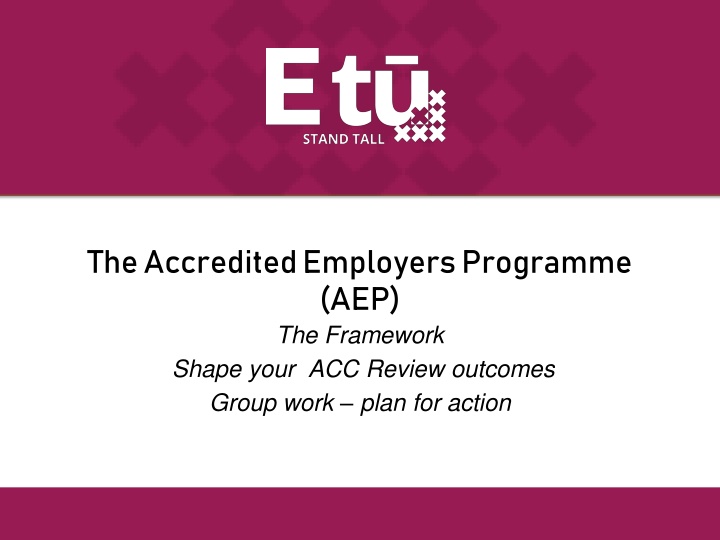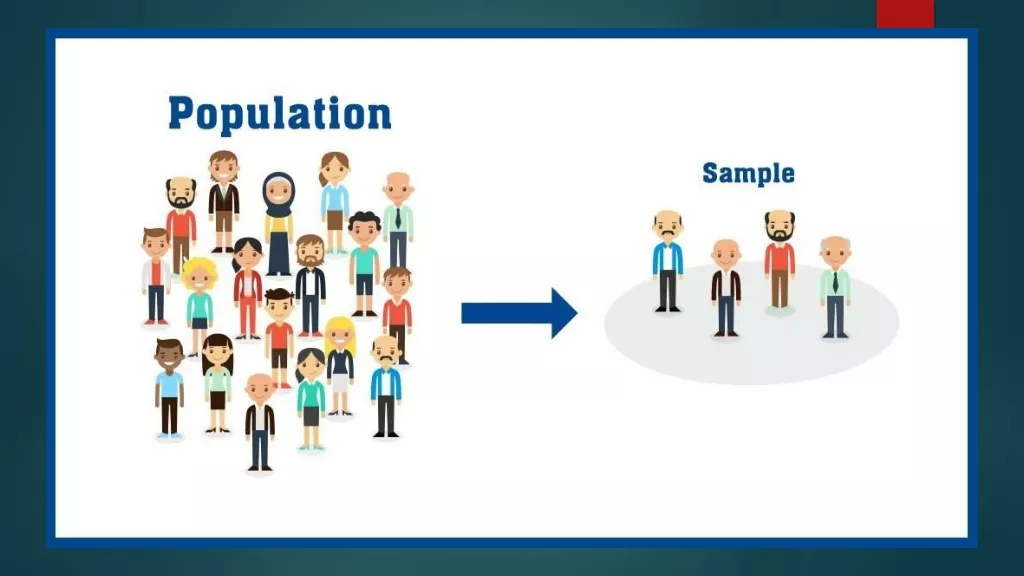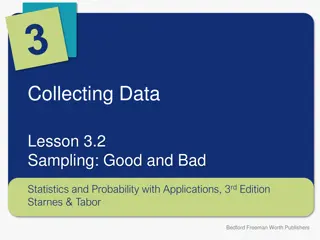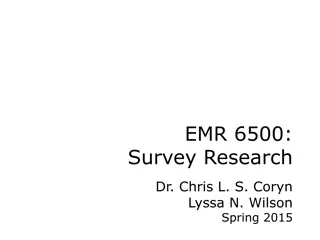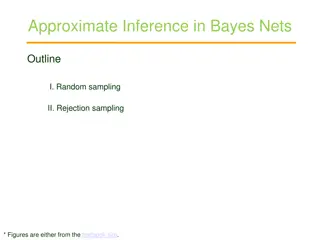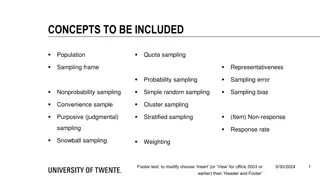Survey Research Essentials: Sampling, Statistics, and Design
Delve into the fundamentals of survey research, covering crucial topics such as elements of the sampling problem, basic statistical concepts, and survey sample design. Explore how to select a sample effectively, understand key technical terms, and address primary sampling theory questions. Learn about estimating population parameters, controlling information quantity in a sample, and specifying error bounds for estimation accuracy. Gain insights into probability, error estimation, and the importance of sampling theory in research methodology.
Download Presentation

Please find below an Image/Link to download the presentation.
The content on the website is provided AS IS for your information and personal use only. It may not be sold, licensed, or shared on other websites without obtaining consent from the author.If you encounter any issues during the download, it is possible that the publisher has removed the file from their server.
You are allowed to download the files provided on this website for personal or commercial use, subject to the condition that they are used lawfully. All files are the property of their respective owners.
The content on the website is provided AS IS for your information and personal use only. It may not be sold, licensed, or shared on other websites without obtaining consent from the author.
E N D
Presentation Transcript
The Accredited Employers Programme (AEP) The Framework Shape your ACC Review outcomes Group work plan for action
Employerscan reduce Work levy by up to 90% through the Accredited Employers Programme(AEP). Thislets themmanage theiremployees injuries by standing in the shoes of ACC. There are risks involved. AEP suits employers who pay an annual Work levy of over $250,000. Framework is Under section 326C of the Accident Insurance Act 1998. Gazette 19April 2000, Issue No41
Stated requirements Meet the ACC audit standards for workplace safety and be able to demonstrate an ongoing commitment to maintaining these standards Demonstrate employee involvement in injury prevention and management process Have active injury management procedures covering rehabilitation and return to work Have systems and processes in place to ensure injured employees can access their legal entitlements Demonstrate financial solvency Be able to meet the claims data reporting and electronic transfer requirements.
Partnership Discount Plan where employers accept responsibility for payment of claims over a fixed period (1 or 2 years). Full Self-Cover Plan where employers assume financial liability at the end of the claims management period (2 to 5 years) in return for a greater premium discount.
Shape your ACC Review outcomes opportunity to grow health and safety leadership amongst accredited employers. some features of the programme have not functioned as intended. indications that some programme objectives are not being achieved. injury management outcomes are not as positive as expected. satisfaction with injury, claims, and rehabilitation management for employees is low compared with ACC-managed work claims. There are some positive outcomes. The programme currently delivers better return to work outcomes for employees and lower compensation costs than for those not part of AEP.
. employees in AEP don't always feel they have adequate opportunities to influence their work environment. They want the opportunity to raise issues and contribute to solutions in injury prevention and see real change Currently, the programmeis not delivering consistent and positive outcomes for those employed by AEs when they have a work injury. We found low employee satisfaction with the injury/claims/rehabilitation management process compared to non-work claims.
. In some cases, employees may not report when they disagree about the way their claim or rehabilitation and return to work has been managed because of fears of the impact on their career Some treatment providers feel that AEs and TPAs don't always act in the best interests of their employees. They see that AEs have a conflict of interest by trying to save money and provide appropriate rehabilitation and return to work pathways for their employees Current data collected for the programmeis incomplete and does not allow for effective benchmarking. Auditors are frustrated that addressing recommendations for improvements (especially for critical risks) isn't mandatory
ACC response to the review streamlining internal processes and making some initial improvements to how ACC administers the programme improving the quality of our data by reviewing the data and identifying new data collection requirements made changes to data collection that will allow to survey a wider range of workers for Customer Satisfaction Survey identified further data improvements which expected to be in place early 2022 changes to the Framework are made by the Minister for ACC in consultation with stakeholders. We do not currently have a date for when this consultation will take place, however we will notify all stakeholders when we have a timeline for this.
Main points of E t submission ACC must give a clear message that membership is a privilege that can be withdrawn if performance is unsatisfactory Workers and unions should have a greater say whether a company should remain in the scheme Company needs to provide more evidence of real injury prevention and worker participation in decision making A credible disputes process with union involvement
Group work What would be required to make the scheme perform as intended? How would we go about achieving this?
